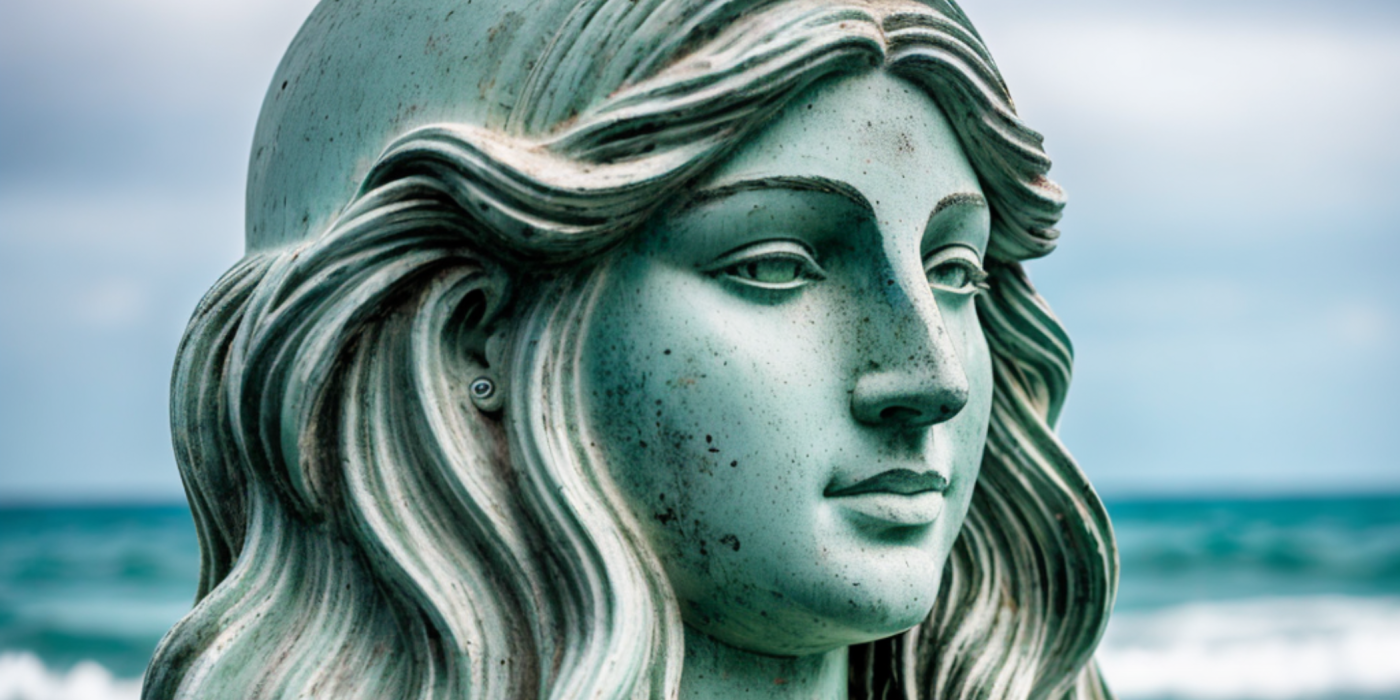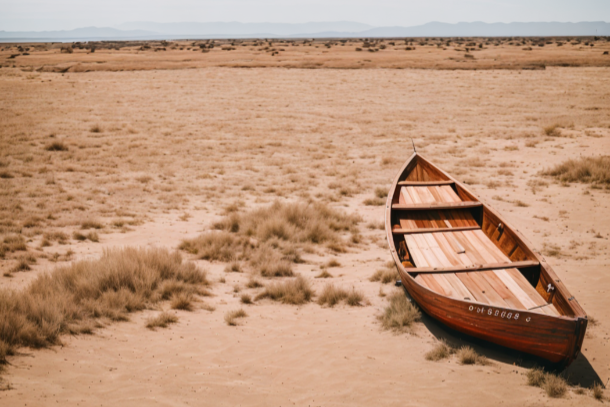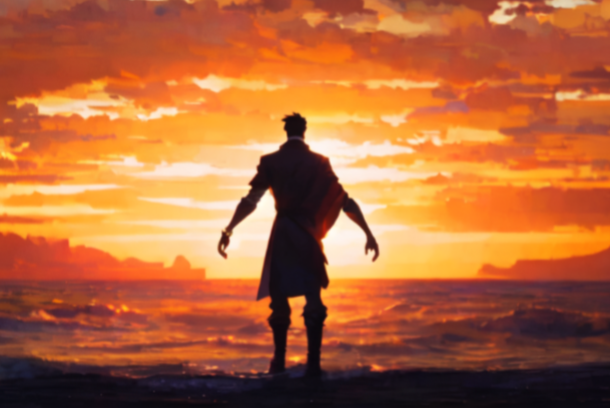Exploring Sea Deities Around the World: A Dive into Global Mythologies

Sea deities have occupied a central place in the mythologies and religions of various cultures throughout history. Representing the majesty and mystery of the world's oceans, these gods and goddesses often hold key roles in the stories, rituals, and everyday lives of the people who worship them.
Understanding Sea Deities
Sea deities are gods and goddesses associated with the sea and water bodies in different mythologies around the world. They are divine entities that embody the power, beauty, and vastness of the seas, embodying its many moods and elements - from tranquil waves to raging storms.
Manifestations of Nature's Power
In many cultures, these deities represent the power of nature, epitomising the unpredictable and uncontrollable forces of the world around us. People revered and feared them, as their whims and desires were believed to affect the weather, sea conditions, and the abundance of marine life.
Guardians and Protectors
Sea deities were also viewed as guardians or protectors, with people seeking their blessings for safe sea voyages and bountiful catches. They play a pivotal role in various mythologies, symbolising both the life-giving and destructive forces of nature.
The Influence of Sea Deities in Different Cultures
Sea deities exert a significant influence on the cultural practices, belief systems, and art forms of various societies. They feature prominently in folk tales, epic poems, and ancient chronicles, teaching moral lessons, explaining natural phenomena, or recounting the deeds of heroic figures.
Cultural Reflections and Artistic Expressions
Art and literature in many societies are rich with the imagery and symbolism associated with sea deities. From Greek sculptures of Poseidon to Japanese paintings of Ryūjin, these divine figures have inspired countless works of art, reflecting the deep reverence and awe for the sea and its deities.
In conclusion, sea deities are not just characters in old tales but vital aspects of human culture and history. They reflect our deep-rooted connection with the sea and our attempts to understand and respect the forces of nature.
The Sea Deities of Ancient Greece
The maritime culture of Ancient Greece was rich with mythology, most notably embodied in their pantheon of sea deities. These figures held significant sway over people's lives, particularly those connected to the sea, such as sailors and fishermen.
Poseidon: His History, Representation, and Significance
Poseidon, the God of the Sea, was one of the most revered figures in Ancient Greek mythology. Known for his potent trident and tempestuous temperament, Poseidon was said to govern the seas, earthquakes, and horses. His mighty power and moody disposition were viewed as representative of the sea's volatile nature, rendering Poseidon an influential and often feared figure.
Amphitrite: Poseidon's Wife and the Sea's Queen
Amphitrite, the queen of the sea and Poseidon's consort, was also an integral part of Greek sea mythology. Representing the calm and serene aspects of the sea, Amphitrite was typically portrayed as a beautiful and gracious figure. She served as a calming counterpart to Poseidon's tumultuous nature.
Triton and Other Minor Sea Deities
Triton, the herald of the sea and son of Poseidon and Amphitrite, is another key figure in the Greek pantheon. Alongside other minor deities such as the Nereids (sea nymphs) and Proteus (the old man of the sea), Triton contributed to the multifaceted depiction of the sea in Greek mythology.
Influence of These Deities on Greek Culture and Mythology
The influence of these sea deities pervaded various aspects of Greek culture, from literature and art to daily life and societal norms. Stories of their exploits were handed down through generations, serving as moral lessons, explanations for natural phenomena, and means to instil reverence for the formidable sea. Today, their legacy persists, reflecting the profound connection between the Ancient Greeks and the sea.
The Sea Gods of Roman Mythology
Neptune: The Roman Counterpart to Poseidon
In Roman mythology, Neptune is perhaps the most renowned sea deity, serving as the direct counterpart to the Greek god Poseidon. Revered as the god of the sea, horses, and earthquakes, Neptune is depicted as a powerful figure wielding a trident, similar to his Greek equivalent. His name has been derived from 'neptus', suggesting clouds or moisture, symbolising his profound connection with water.
Salacia: Neptune's Wife and Goddess of Sea Waters
Not to be forgotten is Salacia, Neptune's consort and the goddess of sea waters. With her roots in the word 'sal', meaning salt, Salacia represents the vast, open waters and the calm, soothing aspects of the sea. In iconography, she is often portrayed accompanying Neptune on a grand chariot, drawn by sea creatures.
Influence and Legacy in Roman Culture and Arts
The influence of these Roman sea deities transcends beyond mythology and has a notable legacy in the cultural fabric of Roman society. Neptune, in particular, was worshipped by sailors for safe voyages, and his temple served as a refuge for them. Various celebrations, such as the Neptunalia festival, were dedicated to honouring Neptune.
Moreover, the influence of these deities continues to be evident in art and literature. The stirring images of Neptune and Salacia have been brought to life through countless sculptures, mosaics, and frescoes. Their tales and symbolism offer rich inspiration for works of literature and philosophy, continuing to captivate audiences with their timeless appeal.
In essence, the sea gods of Roman mythology have left an indelible imprint, contributing not only to the richness of Roman cultural heritage but also inspiring art and thought through the ages.
Norse Sea Deities
Delving into the world of Norse mythology, we encounter a rich tapestry of gods, goddesses, and fantastic beings. Among these, the sea deities hold a special place.
Njord: The God of Sea, Wind, and Fertility
Known as the embodiment of the sea, wind, and fertility, Njord plays a pivotal role in Norse mythology. Originally from the Vanir tribe of gods, Njord was known for his extraordinary power over the elements. He was revered as the controller of the winds, responsible for safe seafaring, bountiful fishing, and sea-based trade. He also symbolised fertility, granting prosperity and abundance to those who worshipped him. Interestingly, despite being a sea god, he was often depicted residing in the inland realm of Noatun, reflecting the significance of the sea to inland economies.
Rán and Her Daughters: The Deities of the Deep Sea
Rán, the wife of the sea giant Ægir, is another powerful figure in Norse mythology. Rán was both feared and respected. She was known to pull sailors from their ships with her net and drag them into her underwater abode, blending themes of peril and the allure of the sea. Rán and Ægir had nine daughters, often thought to represent the various waves of the ocean. Each daughter had a unique character, further enhancing the diversity and complexity of the sea in Norse mythological understanding.
The Role of Sea Deities in Norse Mythology and Folklore
The sea deities in Norse mythology encapsulate the Norsemen’s relationship with the sea - a mixture of reverence, dependence, and fear. The sea, after all, was a crucial part of Viking life for travel, trade, and sustenance. In folklore, tales of Njord, Rán, and her daughters served to explain the unpredictable and powerful nature of the ocean, shaping the worldview of ancient Norse cultures.
Polynesian Sea Deities: Tangaroa and Namaka
In the rich tapestry of Polynesian mythology, the sea plays a pivotal role. It is the realm of some of their most revered deities, reflecting the profound bond between the Polynesian people and the ocean that surrounds their islands.
Tangaroa: The Supreme God of the Sea and Creation
Tangaroa, sometimes known as Kanaloa in certain regions, stands as one of the most powerful gods in Polynesian culture. As the deity presiding over the oceans, he's considered the father of all sea creatures and a symbol of creation and life. His influence permeates Polynesian seafaring traditions, from the crafting of canoes to navigation techniques.
The Cultural Impact of Tangaroa
Tangaroa's revered status transcends mythology, as his influence is seen in cultural practices, rituals, and arts. Many Polynesian societies would hold ceremonies in his honour before setting off on significant sea voyages, seeking his protection and guidance.
Namaka: The Fierce Hawaiian Goddess of the Sea
While Tangaroa holds sway over the broader Polynesian culture, Hawaiian mythology accords a special place to Namaka. As a sea goddess, she embodies the untamed and volatile aspects of the ocean. Legends portray her as a tempestuous deity, controlling the seas' tides and associated with phenomena like tsunamis.
Namaka's Role in Hawaiian Tradition
Namaka's importance in Hawaiian tradition is evident in their respect for the sea's unpredictable nature. Her stories serve as cautionary tales, highlighting the necessity of respecting the ocean's power and maintaining a harmonious relationship with the natural world.
In conclusion, the sea deities of Polynesian mythology, such as Tangaroa and Namaka, hold an extraordinary place in the hearts and traditions of these island cultures, testifying to their deep-rooted connection to the sea.
Japanese Sea Deities
In Japanese mythology, sea deities play a significant role in shaping the cultural and historical narrative.
Ryūjin or Watatsumi: The Dragon King of the Sea
At the forefront of these divine beings, we find Ryūjin or Watatsumi, also known as the Dragon King of the Sea. This deity is often depicted as a large, powerful dragon capable of controlling the ocean's tides. The legend says that Ryūjin lived in Ryūgū-jō, his palace beneath the sea, from where he ruled over sea creatures and had command over the sea's bounty.
Ryūjin held a significant place in Japanese folklore and was highly respected by fishermen and sailors who revered and sought his blessings for safe and productive voyages.
The Jewels of the Tides
One of the most renowned tales about Ryūjin revolves around the magical tide jewels. In this story, Ryūjin controlled the ebb and flow of tides with two legendary tide jewels - one that could cause the tide to flood and another to ebb.
Influence on Japanese Folklore and Literature
Ryūjin's influence extends beyond traditional mythology and permeates Japanese literature and arts. In many classic literary works, Ryūjin features as a character or influence, shaping the narrative's direction. His tales have been passed down through generations, influencing numerous forms of art, including Kabuki and Noh theatre, poetry, and even modern manga and anime.
His enduring appeal underscores the deep respect the Japanese culture holds for the sea and its life-giving power. Ryūjin continues to be a symbol of the mystery, beauty, and sometimes terrifying power of the ocean.
Yemaya: The Yoruban Goddess of the Sea
Yemaya, often considered the Mother of All, is a profound deity originating from Yoruba mythology. As the goddess of the sea, she represents the essence of motherhood and is viewed as the protector of children. Her essence is entwined with the ocean, embodying its vastness and depth. The sea, with its nurturing and life-giving qualities, is a symbol of her inherent characteristics. Yemaya is often depicted as a beautiful woman adorned with shells and other sea-related objects, pointing towards her realm of influence. The reverence for Yemaya transcends Africa, extending into the Americas due to the trans-Atlantic slave trade.
Nommos: The Deities from Dogon Mythology
The Nommos are a collective of deities worshipped by the Dogon people of Mali. Primarily associated with water, the Nommos are sometimes described as amphibious beings, representing the wisdom and power of the sea. According to Dogon mythology, these celestial beings descended from the sky in a vessel accompanied by fire and thunder. They created all the components of the universe, further enforcing their importance in Dogon cosmology.
Influence and Role in African Religions and Spirituality
The influence of these sea deities permeates deeply into African religions and spirituality. Yemaya and the Nommos are integral to their respective cultures, shaping beliefs, traditions, and rituals. The goddess Yemaya influences contemporary spiritual practices, being central to African diaspora religions like Santeria and Candomble. The Nommos, likewise, have a profound influence on Dogon cosmology, defining their understanding of the universe. Their mythological tales offer profound insights into human nature, moral values, and our connection with the natural world. As we delve deeper into the world of these deities, we develop a more enriched perspective on African mythology and its appreciation of nature's elements.
Sea Deities in Native American Mythology
The rich tapestry of Native American mythology contains a plethora of sea deities, with many tribes associating the vast oceans with powerful gods and goddesses. Two deities in particular, Sedna and Nuliajuk, hold significant prominence in Inuit mythology.
Sedna: The Inuit Goddess of the Sea and Marine Animals
Sedna, often referred to as the 'Mother of the Sea', is a principal deity in Inuit mythology. As the goddess of the sea and marine animals, Sedna holds a position of utmost importance for the Inuit people, who rely heavily on the ocean for their sustenance.
Sedna's myth narrates a tragic tale of betrayal and transformation. Originally a beautiful maiden, Sedna was betrayed by her father and cast into the sea. As she clung to the side of his boat, her father cut off her fingers, which turned into whales, seals, and other marine animals. Sedna herself became a powerful sea goddess, forever dwelling at the bottom of the Arctic Ocean.
Nuliajuk: A Deity of the Sea in Inuit Mythology
Another significant figure is Nuliajuk, who is sometimes considered to be another name for Sedna. In some Inuit traditions, however, Nuliajuk is portrayed as a distinct entity with her own myths and stories.
Nuliajuk's narrative is often one of mystery and deep wisdom. She is depicted as a wise woman who holds secrets about the intricate connections between humans, animals, and the spirit world. Just like Sedna, Nuliajuk's realm is the sea, and she is revered as a guardian of its creatures.
Cultural Significance and Myths
The myths of Sedna and Nuliajuk underline the profound respect the Inuit people have for the sea and its inhabitants. They also emphasise the crucial role these deities play in shaping the moral and societal frameworks of the Inuit community. Recognising the deities' wrath in the form of tumultuous seas and scarcity of game, the Inuit have rituals and shamanistic practices dedicated to appeasing these powerful sea goddesses.
Contemporary Influence and Representation
The contemporary influence of sea deities on various aspects of culture remains significant. Even today, these figures from ancient mythologies continue to inspire a diverse range of creative and artistic expressions.
Influence on Art and Literature
From the powerful strokes of J.M.W. Turner's maritime paintings to the captivating descriptions in the novels of Patrick O'Brian, the mystique of the sea and its deities have had a profound influence on art and literature. Artists, sculptors, and writers often turn to these timeless symbols, breathing new life into their tales. One can discern the indelible imprint of Poseidon, Neptune, Sedna, and other sea gods in various artistic depictions, offering a stark reminder of their pervasive legacy.
Modern Interpretations in Film and Pop Culture
The realm of film and popular culture has also seen the permeation of these sea deities. Movies such as "Pirates of the Caribbean" and "Aquaman" subtly incorporate elements of sea mythology. The powerful character of Aquaman, for instance, bears stark resemblances to Neptune and Poseidon, ruling over the ocean and controlling its creatures. In the realm of video games, too, titles like "God of War" vividly portray the ancient deities, their powers, and their realms, echoing the stories of the sea deities.
Reinterpretations in Contemporary Fantasy and Mythology
In contemporary fantasy and mythology, these deities have been reinterpreted to cater to modern narratives. Authors like Rick Riordan in his 'Percy Jackson' series have reimagined ancient sea deities, making them accessible to younger generations. These reinterpretations have not only kept these characters alive but have also reinforced their significance in our collective cultural consciousness.
In essence, the enduring presence of sea deities in our modern culture underscores their enduring relevance and the universal human fascination with the sea and its myriad mysteries.
Conclusion: The Universality and Significance of Sea Deities
A Global Phenomenon
From our comprehensive exploration, it is evident that sea deities permeate cultures and mythologies across the globe. From the thunderous Poseidon of Ancient Greece to the dragon king Ryūjin of Japanese lore, sea deities have commanded a profound reverence and fascination in societies both past and present. Their universality paints a rich picture of shared human experiences, a collective awe and respect for the mysteries and power of the sea.
The Symbolism and Lessons from Sea Deities
Beneath the surface of each enthralling tale and each vivid description, there's an inherent symbolism attached to these deities. They often represent elements such as fertility, life's cyclical nature, and the human struggle against uncontrollable forces. They serve as reminders of nature's power and the need to respect and understand our environment.
Shaping Human Understanding and Perception
Sea deities have played an integral role in shaping human understanding and respect for the sea and nature. They often embody the sea's dual nature, being both a source of sustenance and a potential force of destruction. This balance has imbued societies with a complex understanding of the natural world, appreciating its gifts while respecting its power.
Their Enduring Impact
In contemporary times, the influence of these sea deities extends beyond ancient tales and cultural practices. They persist in the realms of art, literature, and media, continuously informing our perceptions of the sea and nature. By revisiting and understanding these mythological figures, we can better appreciate our shared human history and our enduring relationship with the natural world.
In summary, sea deities around the world represent a universal respect for the sea and nature. They remain an integral part of our cultural heritage and continue to influence our understanding and interaction with the natural world.
Related to this article are the following:
I do hope you have enjoyed this article and hope that you will subscribe to my newsletter so you can get the latest information about all things naturally relaxing.
Stay in touch, join the Naturally Relaxing Newsletter
Newsletter Signup
Post Your Comments
or post as a guest
Be the first to comment.
Latest articles in Water
Idea is to do article on waterfall

Finding the Perfect Swimming Hole: Your Comprehensive Guide

Harvesting Rainwater: A Comprehensive Guide to Rain Barrels and Water Storage

Creating Resilient Gardens: An Expert Guide to Drought-Tolerant Landscaping

The Bottled Water Dilemma: How Many Bottles Do You Need for a Gallon?






